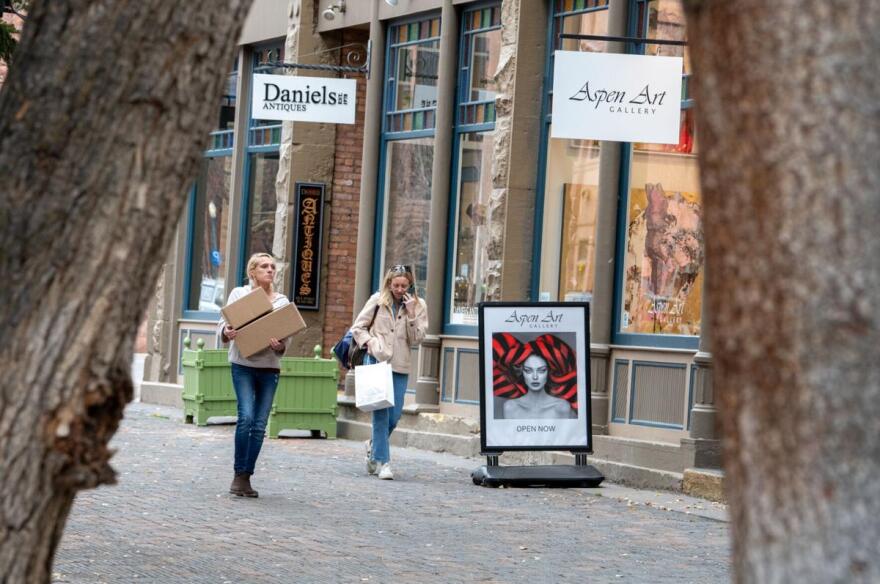Sales tax in the city of Aspen will reach above 10% next year as a result of the passage of three sales tax measures last week.
Ballot measures 2A, 6A and 7A all approved sales tax increases for education, fire emergency services and early childhood education, respectively. Voters approved a 0.3% increase to a city of Aspen sales tax dedicated to the Aspen School District, a new 0.5% sales tax increase for the Aspen Fire Protection District and a new 0.25% sales tax for a new special taxing district spanning Aspen to Parachute dedicated to early childhood education.
“It’s a bit of a mixed bag of feelings,” said Aspen City Manager Pete Strecker. “Overall, I think the city is very much supportive of a lot of the efforts and the resources requested. It’s also just a challenge, obviously, for our community as that tax rate goes up.”
The fire protection district’s 0.5% tax and the new early childhood education district’s 0.25% tax will not apply to certain transactions on items like groceries, medicine, diapers, gas or feminine hygiene products.
But together with the school district’s additional tax, they still put Aspen among the top 10 municipalities in the state with the highest sales tax rates. Before the passage of last week’s ballot measures, its 9.3% aggregate sales tax ranked 30th in the state, according to the Colorado Department of Revenue.
Nine municipalities in Colorado have aggregate sales tax rates above 10%, including Snowmass Village with a 10.4% sales tax, ranked the seventh highest in the state.
It brings Aspen’s aggregate sales tax to 10.35%, one of the highest in the state.
Winter Park has the highest sales tax in the state at 11.2%. The Red Sky Ranch Metropolitan District in Wolcott has an 11.19% sales tax; the Arrowhead Metropolitan District in Edwards has a 10.69% sales tax; and Empire and Idaho Springs have 10.55% sales tax rates. Silverton, like Snowmass, has a 10.4% sales tax rate.
Of the few communities that held elections to increase sales taxes last week, none of them (besides Aspen) were among the communities with the highest sales tax rates in the state, according to the Colorado Municipal League. The new sales taxes that were approved in those communities did not subsequently place any of them among the communities with the highest sales tax rates either.
Aspen leaders supported the efforts of each sales tax question, but worried the rising costs in town, combined with federal policies impacting tourism, may negatively impact visitation in the future.
Mayor Rachel Richards was hesitant to support the Aspen School District’s request to double its city sales tax to 0.6% because of the impacts to the city’s aggregate sales tax if voters approved all three sales tax questions (district leaders needed support from Aspen City Council to place the question on the ballot because it is a city tax). She ultimately supported the ballot question alongside other council members, but she also worries how it might impact residents, especially as things across the board become more expensive.
“I think people were willing to make this leap,” Richards said, “but it is a leap. It’s something that we’ll have to see how they play out.”
The larger sales tax can also be attributed to changes at the state level and municipalities having to make up for that, she said. The school district said it asked voters to approve its ballot questions last week in part to make up for changes at the state level impacting local funding for schools.
“It’s a domino effect. When the state cuts back the school financing, the school financing falls on local shoulders. When the state changes property tax collections so they can keep people’s property taxes low, that’s when you see a fire district say, ‘Well, we can’t depend on our property tax alone, we have to have a diversity of sources to make sure we can protect our community,’” Richards said. “We as a local community clearly stepped up to those measures.”
“It certainly is concerning, but I think that people stepped up to do what they can to assist these vital community services and needs,” she added.
Despite the over 1% increase in the city’s aggregate sales tax, Richards doesn’t see a way to cut the city’s sales tax in other areas. In 2025, 1.5% of the city’s sales tax went toward parks and open space, 0.3% went to the school district, 0.25% went toward Kids First, 0.2% went toward affordable housing and 0.15% went toward transportation.
The city collects sales tax revenue through four jurisdictions. In 2025, the city sales tax was 2.4%, Pitkin County’s sales tax was 3.6%, the Roaring Fork Transportation Authority’s special district sales tax was 0.4% and the state’s was 2.9%.
The city can offer some reprieve to residents through its food tax refund, Strecker said. The additional 0.3% school district sales tax can be folded into the annual food tax refund, which in 2026 will be $136.
The food tax refund is calculated using the prior year’s figures, so the additional sales tax wouldn’t be incorporated until 2027, Strecker said. He did not immediately know how much it would add to the food tax refund amount.



